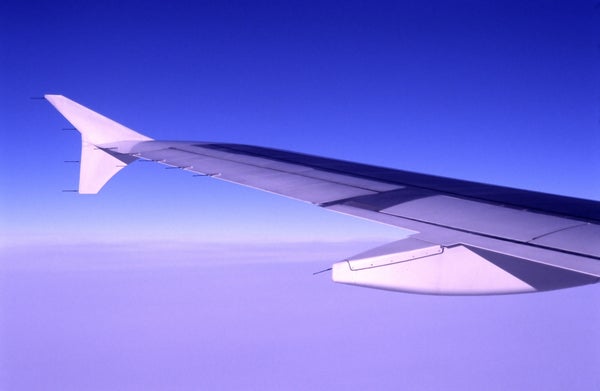In 2019 air travel accounted for 2.5 percent of global carbon emissions, a number that could triple by 2050. While some airlines have started offsetting their contributions to atmospheric carbon, significant cutbacks are still needed. Electric airplanes could provide the scale of transformation required, and many companies are racing to develop them. Not only would electric propulsion motors eliminate direct carbon emissions, they could reduce fuel costs by up to 90 percent, maintenance by up to 50 percent and noise by nearly 70 percent.
Among the companies working on electric flight are Airbus, Ampaire, MagniX and Eviation. All are flight-testing aircraft meant for private, corporate or commuter trips and are seeking certification from the U.S. Federal Aviation Administration. Cape Air, one of the largest regional airlines, expects to be among the first customers, with plans to buy the Alice nine-passenger electric aircraft from Eviation. Cape Air's CEO Dan Wolf has said he is interested not only in the environmental benefits but also in potential savings on operation costs. Electric motors generally have longer life spans than the hydrocarbon-fueled engines in his current aircraft; they need an overhaul at 20,000 hours versus 2,000.
Forward-propulsion engines are not the only ones going electric. NASA's X-57 Maxwell electric plane, under development, replaces conventional wings with shorter ones that feature a set of distributed electric propellers. On conventional jets, wings must be large enough to provide lift when a craft is traveling at a low speed, but the large surface area adds drag at higher speeds. Electric propellers increase lift during takeoff, allowing for smaller wings and overall higher efficiency.
On supporting science journalism
If you're enjoying this article, consider supporting our award-winning journalism by subscribing. By purchasing a subscription you are helping to ensure the future of impactful stories about the discoveries and ideas shaping our world today.
For the foreseeable future, electric planes will be limited in how far they can travel. Today's best batteries put out far less power by weight than traditional fuels: an energy density of 250 watt-hours per kilogram versus 12,000 watt-hours per kilogram for jet fuel. The batteries required for a given flight are therefore far heavier than standard fuel and take up more space. Approximately half of all flights globally are fewer than 800 kilometers, which is expected to be within the range of battery-powered electric aircraft by 2025.
Electric aviation faces cost and regulatory hurdles, but investors, incubators, corporations and governments excited by the progress of this technology are investing significantly in its development: some $250 million flowed to electric aviation start-ups between 2017 and 2019. Currently roughly 170 electric airplane projects are underway. Most electric airplanes are designed for private, corporate and commuter travel, but Airbus says it plans to have 100-passenger versions ready to fly by 2030.
